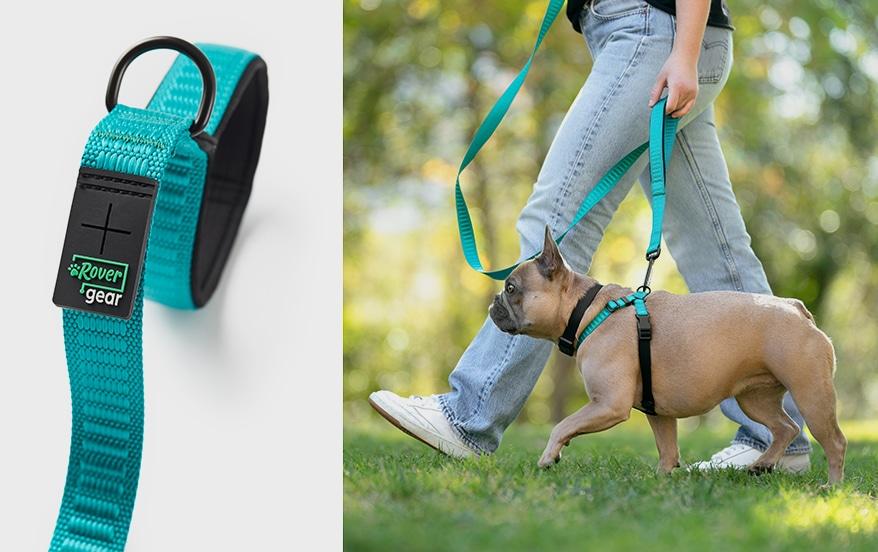Taking long walks with your dog is a wonderful way to bond, explore nature, and enjoy the health benefits of physical activity together. However, ensuring your furry friend’s safety during these adventures is paramount. Whether you’re strolling through a bustling city or hiking a tranquil trail, being mindful of potential hazards can prevent mishaps and make your walks more enjoyable. In this article, we’ll explore the best practices for dog safety on long walks, offering practical tips and insights to keep your canine companion safe and happy. From understanding your dog’s physical limits to equipping yourself with the right gear, let’s embark on a journey towards safer, more fulfilling walks with your four-legged friend.
Choosing the Right Gear for Your Furry Friend
Ensuring your dog’s safety during long walks begins with selecting the right gear. The collar or harness is a pivotal choice; while collars are traditional, harnesses often provide better control and are gentler on your dog’s neck, especially for breeds prone to respiratory issues. Opt for adjustable and padded options for maximum comfort. In addition, a sturdy leash is essential—consider retractable ones for areas where your dog can roam freely, but always keep a shorter, non-retractable leash for crowded or high-traffic areas.
- Reflective Gear: Essential for early morning or late evening walks to keep your furry friend visible to motorists.
- Booties: Protects paws from hot pavement, sharp objects, and ice-melting chemicals.
- ID Tags and Microchips: Ensure your dog has updated ID tags and consider a microchip for added security.
- Water Bottles and Collapsible Bowls: Hydration is key on long walks, especially during warm weather.
Keeping Your Dog Hydrated and Energized
Ensuring your furry friend stays hydrated and full of energy during long walks is crucial for their health and happiness. Always carry a portable water bottle designed for dogs, which often comes with an attached bowl, making it easy for your pup to drink on the go. Consider offering small sips of water every 20 minutes, especially on warm days, to prevent dehydration. Avoid allowing your dog to drink from puddles or streams, as these may contain harmful bacteria or chemicals.
To keep your dog energized, pack some healthy snacks like small pieces of cooked chicken, carrot sticks, or commercially available dog treats. These will provide a quick energy boost without overloading their stomach. Always observe your dog for signs of fatigue or heat exhaustion, such as excessive panting or reluctance to continue walking. If you notice any of these signs, find a shaded area and let them rest, offering water and snacks as needed. Prioritizing hydration and energy will ensure your long walks are enjoyable and safe for both you and your canine companion.
Understanding Your Dogs Limits and Comfort
Every dog is unique, and understanding their physical and emotional boundaries is crucial for ensuring their well-being during long walks. Observe your furry friend closely and pay attention to any signs of fatigue or discomfort, such as excessive panting, limping, or reluctance to continue. Respect their pace and avoid pushing them beyond their limits, as overexertion can lead to injuries or stress. Remember, walks should be enjoyable for both you and your dog, providing not only exercise but also opportunities to explore and bond.
To ensure your dog’s comfort, consider the following tips:
- Hydration: Always carry enough water for both you and your dog, especially on warm days.
- Rest breaks: Schedule regular breaks to let your dog rest and recover.
- Weather conditions: Be mindful of the temperature and adjust the length and intensity of the walk accordingly.
- Proper gear: Ensure your dog is equipped with a well-fitted harness and leash to prevent any strain or injury.
By tuning into your dog’s needs and respecting their comfort levels, you can create a safe and enjoyable walking experience that benefits both of you.
Ensuring a Safe Environment for Adventure
Creating a secure atmosphere for your furry friend during extended treks involves more than just a sturdy leash and a comfortable harness. It’s about anticipating the challenges of the trail and equipping yourself with the right tools and knowledge. Start by ensuring your dog’s ID tags are up-to-date and easily readable. This simple step can be invaluable if your adventurous pup decides to wander off the beaten path. Additionally, consider investing in a GPS collar for real-time tracking.
- Hydration and Nutrition: Bring enough water and snacks for both you and your dog. Collapsible bowls are perfect for on-the-go hydration.
- First Aid Kit: Pack a basic first aid kit tailored for dogs, including bandages, antiseptic wipes, and any necessary medications.
- Weather Preparedness: Check the weather forecast and dress your dog accordingly. In colder climates, a dog jacket can provide extra warmth, while in hotter conditions, a cooling vest might be beneficial.
- Trail Etiquette: Keep your dog on a leash unless in designated off-leash areas. This not only ensures their safety but also respects the wildlife and other trail users.
By following these practices, you ensure that your long walks are not only enjoyable but also safe for your four-legged companion.

